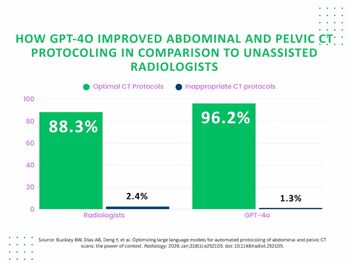
Get Ready to Get Triggered
The Journal of the American College of Radiology tackles the provocative in its first issue of 2021.
It is a new year, and you might not look at radiology the same way again. At least, that appears to be the goal of the Journal of the American College of Radiology (JACR) in its
In this first month of the year, the journal is wading into topics and territories that are likely to raise differences of opinions and contentious conversations. And, that is the point.
“Rarely do we start an issue of the JACR with a trigger warning. This special issue will provoke strong reactions from our readers, including shock, offense, and even disgust,” wrote Christoph I. Lee, M.D., MS, JACR deputy editor. “The articles were deliberately selected to elicit these responses and will challenge the conventional wisdom across the imaging community.”
So, get ready to see the profession in a different light, said Lee’s co-authors Reed A. Omary, M.D., MS, JACR associate editor of leadership, and Caroline Chung, M.D., MSc, JACR associate editor of radiation oncology.
For more coverage based on industry expert insights and research, subscribe to the Diagnostic Imaging e-Newsletter
Within the articles – many of which are marked as open access this month – authors tackle ideas that “go against the grain,” said Lee and his colleagues. Ranging from whether whole-body advanced imaging for employees is advisable to whether wellness programs actually combat radiologist burnout effectively, from how much implicit bias impacts and explains the inequities in the profession to the ethical obligations around patient consent and artificial intelligence, these articles are intended to ignite thoughtful debate that can move the industry forward.
But, the issue’s overall objective is much larger. While these articles are intended to address difficult topics and provide different perspectives, the greater impetus is to remind providers of the vast number of opportunities available in radiology to actively impact patients’ health and well-being.
“By exploring the provocative,” said Lee and his colleagues, “we hope that this special issue inspires settlers to join those pioneers of the future and thereby expand the confines of radiology.”
Newsletter
Stay at the forefront of radiology with the Diagnostic Imaging newsletter, delivering the latest news, clinical insights, and imaging advancements for today’s radiologists.




























